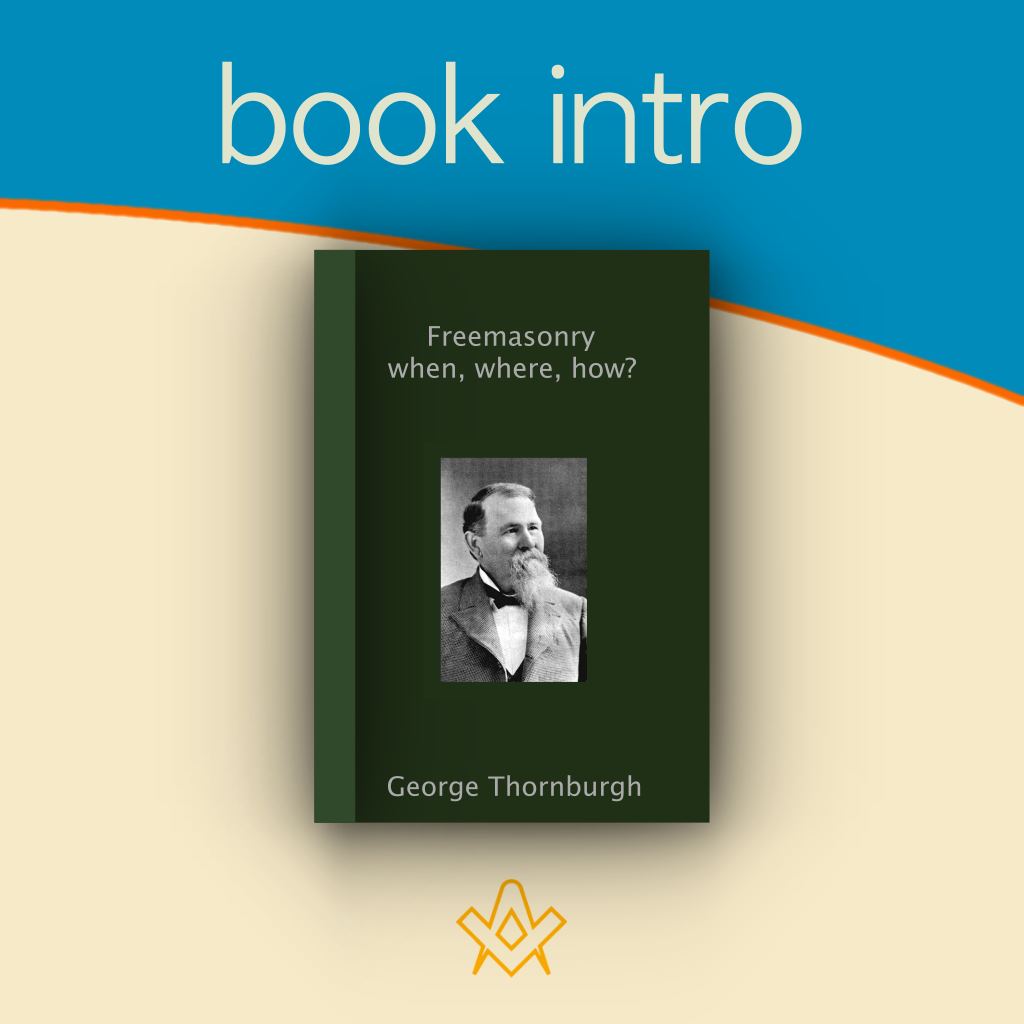Over and over again the question has been asked, What is the origin of speculative Free and Accepted Masonry?
The day of accepting vague tradition is rapidly passing and intelligent Masons are inquiring for themselves for historical facts, as well as for authentic traditions.
In their zeal for the antiquity of the Fraternity, orators and writers have traced it back to the Garden of Eden. Less enthusiastic ones have contented themselves with stopping at the building of King Solomon’s Temple.
The latter, by reason of the symbols and language used, are less unreasonable, but in truth there is no real historical relation between King Solomon’s Temple and Speculative Freemasonry.
Speculative Masonry, which is the Freemasonry of today in this country, is the outgrowth, the child of Operative Masonry.
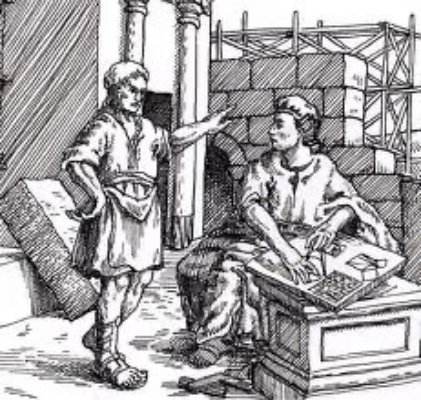
Operative Masons
To give intelligently the history of Speculative or Symbolic Freemasonry, we must first give briefly the history of Operative Masonry.
In all ages of the world, and especially since the building of King Solomon’s Temple, there have been skilled artisans distinguished from ordinary workmen.
Among the most noted of them were the workers in stone, called masons. The word “Mason” comes from the Latin “maconetus,” meaning “a builder.”
Skilled Operative Masons plied their trade in England, France and Italy, during the Middle Ages, and were famed for the character of their work.
They were not only builders, but were architects as well. They stamped their individuality on every building.
They had so far advanced as skilled Masons as to be a privileged class, free to travel wherever they pleased, and to plan and erect buildings exempt from the taxes and limitations imposed upon the less skilled workers.
Being free as to territory and taxes, and free as to the character of the work they undertook, they were called Free Masons.
They built many churches, cathedrals and other stately edifices, some of which still exist. These operatives traveled much in the performance of their work.
In those days, writing was not common and diplomas were unknown. So, in order to be accredited with each other as Craftsmen, a system of passwords and signs was adopted which enabled each to prove to the others that he had been regularly taught his trade, and was no pretender or cowan.
These ancient Operative Masons had their regulations by which a young man was admitted as an apprentice, taught his work and became entitled to practice his trade.
They easily and early fell into the custom of meeting in lodges. From time to time ceremonies for receiving members were adopted and a Ritual was formulated.
In A.D.926 the Operative Masons were granted a charter for a regular organization, empowering them to meet annually at York, where the first Grand Lodge was organized, at which Edwin, the brother of King Athelstan, presided as Grand Master. Operative Masonry was a religion and a trade combined.
I am sure that it will be interesting as well as profitable for me to give, first of all, the ceremonies of conferring the degrees in the Operative Lodges. Their similarity to the ceremonies of the Speculatives will impress the Masonic student.
I have gathered the information from various sources, but give credit for most of the descriptions which follow to “The Ritual of Operative Freemasons”, written by Thomas Carr, M. D., who is still living, and who is an honorary member of a Guild of Operative Freemasons, as well as a Past Master of a Lodge of Speculative Masons.
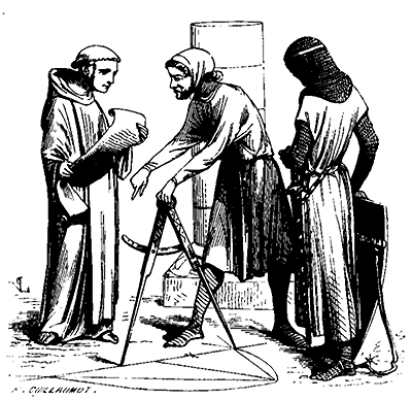
The form of the petition to an Operative Lodge for apprenticeship was as follows :
“I, being the son of a Free Man and years of age, humbly crave to be made an apprentice to the Ancient and Honorable Craft. I am prompted by a favorable opinion preconceived of the fraternity, and I desire full knowledge to enable me to work at the trade. I promise that I will conform to all the ancient usages and established customs of the Order.”
The candidate had to be proposed by one Mason, seconded by another and supported by five more. The application for apprenticeship was posted at the entrance of the quarry or workshop for fourteen days.
On three occasions he must stand by his application, when the men are going to and from work, so that all may see him; and if anyone knows anything against him, it must be reported at the head office, and the matter investigated.
If accepted, he had to appear on the appointed day — the sixth of the week — at high twelve, at the quarry or workshop. He applies at the door, and is admitted on giving the proper password, which had been given him.
He is admitted within the entrance of the Lodge, usually a porch with double doors, and takes an oath not to reveal any part of the proceedings. This is sealed by his kissing the book. The candidate puts his feet on the lower ledge of a foot stone.
It may be interesting just at this point to describe briefly the Lodge room of the Operatives, as they are about to confer the first degree. There are three Masters. They sit in the west so that they face and can see the rising sun.
The Junior Warden sits in the north so that he can see the sun at its meridian height, and the Senior Warden sits in the east so that he can see the setting sun.
The altar is in the center of the Lodge; over it is suspended the letter G, and the Rough Ashlar stone is on its east side. There are three Deacons present, one for the Masters and one for each Warden.
Inside the porch the candidate is divested of all money and hoodwinked. Then three men come out of the Lodge, divest him of all his clothes, and dirty him with mud. The doctor then arrives and removes the hoodwink. He is told to “Wash and be clean.”
The bath is ready and the candidate bathes. Seven times does he dip. The doctor then examines him to see that he is sound in wind and limb and reports him “perfect in all his parts.” Then he is elected by the “clean-hand” sign.
He is clothed in a white cloak, whence the original symbolism of white, signifying a candidate, is obtained, the word candidate meaning literally “I am white.” The candidate is again hoodwinked, still clothed in the white cloak.
He has also a blue cord looped around his neck, held by a man in front and a man behind, and a second blue cord around his center, held by a man on each side. The neck cord being longer than the center cord, the four men make a diamond, with the candidate in the center.
This diamond had a reference to Operative Masonry, and the candidate and his four attendants make “five points,” which has’ another reference to Operative methods.
The candidate now makes application at the inner door. The sword is held to his naked left breast. so as to draw blood.
He is then admitted and led to the north east corner.
Here he is questioned.
What age are you?
What is your character?
What is your knowledge?
Where have you been working?
Have you been a member of any Guild or Company before?
Do you swear you have never been expelled, discharged or “run away” from any work?
In all cases of difficulty and danger in whom do you put your trust?
In El Shaddai is all my t. Right. Rise.
The brothers in the E., S., W., and N. will take notice that — is about to pass before them. He is asked if he sees anything.
He replies No, and the hoodwink is slightly raised so that by bending his head a little forward he is able to see his own feet and two or three feet in front of them.
He is then cautioned to keep strictly to the track or tessellated border, and is led once around it.
He has put one foot in front of the other, toe to heel, and so on; it is called “end on work,” or “work in line.”
The candidate has to make this perambulation once correctly without failure.
From the N. E. corner he goes to the S. E., then to S. W., then to N. W. Then he comes to the Junior Warden, who bars his progress.
On due report the bar is raised and the candidate proceeds. Then back to the N. E. corner and to Senior Warden, who bars progress again.
On due report the bar is removed and then a strip of scarlet is laid down leading to the Rough Ashlar stone on the east side of the altar, so that the candidate shall not step on the squares of the Mosaic Pavement as he is led to the Ashlar stone.
Here he kneels with both knees bare on the rough Ashlar stone, with the left hand S. T. H. B. T. R. R. T. (Support the holy book)
It is interesting to note that this is still preserved as a sign in the Lodges under the Scotch Grand Lodge, as well as among the Operative Freemasons.
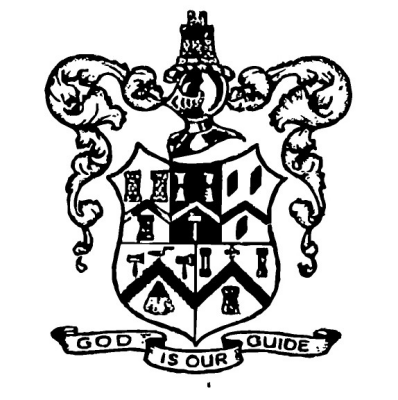
He then takes the following obligation :
I, do, in the presence of El Shaddai and of this worshipful assembly of Freemasons, Rough Masons, Wallers, Slaters, Paviors, Plaisterers and Bricklayers, promise and declare that I will not at any time hereafter, by any act or circumstance whatsoever, directly or indirectly, write, print, cut, mark, publish, discover, reveal or make known any part or parts of the trade secrets, privileges or councils of the Worshipful Fraternity or Fellowship of Freemasonry, which I may have known at any time, or at any time hereafter shall be made known unto me.
“The penalty for breaking this great oath shall be the loss of my life.
That I shall be branded with the mark of the traitor and slain according to ancient customs by being throatailed.
SO THAT MY SOUL HAVE NO REST BY NIGHT OR DAY.
Given under my hand and sealed with my lips.
So help me El Shaddai and the holy contents of this book.”
The form of these oaths explains the archaic form of the obligation in the Speculative Ritual.
People of the Middle Ages believed the soul could not rest unless the body was properly buried, hence the craving was for Christian burial.
It is really the remnant of a Pagan idea transmitted to Christian times. The ancient Romans believed that the soul of an unburied body could not pass the Styx for at least a hundred years.
There is no doubt that in ancient times it was contemplated that these penalties should be actually inflicted; indeed, at a time when physical mutilation such as amputation of a hand, and hanging, drawing and quartering were still in our statute books, there was nothing incongruous in such an oath.
Papworth and Gould record that in 1099 a Bishop of Utrecht was slain for extracting the grand secret from the son of a Master Mason.
After taking the obligation the candidate is requested to seal it with his lips. As his lips are brought to the book, a large seal of soft wax is placed underneath them; his head is forcibly pushed downward so that an actual impression of his lips is taken by the wax, and his obligation is “sealed with his lips” actually and literally.
When the obligation is finished the Master says to the Deacons, “Give light that he may place his hand to the bond.”
A pen is put in his hand, and he signs the bond, “Given under my hand and sealed with my lips.”
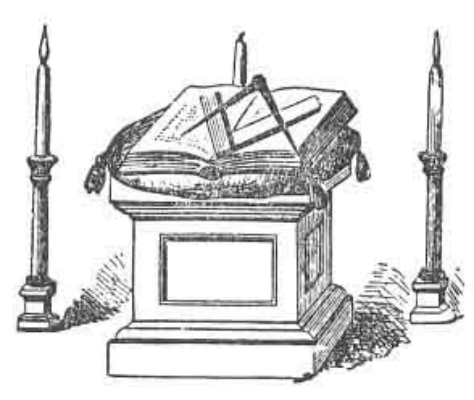
The candidate is then assisted to rise with the words, “Rise, apprentice to the Craft of Freemasons.”
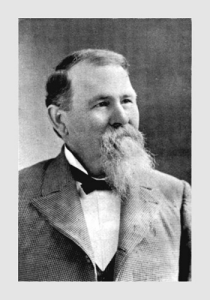
George Thornburgh (January 25, 1847–March 9, 1923) was a politician, soldier, educator, and resident of Powhatan.
Recent Articles: in this series
 Book Intro: The Secret Doctrine Explore the profound synthesis of science, religion, and philosophy in H.P. Blavatsky's "The Secret Doctrine." Discover the true depth of Theosophy beyond the oversimplified term "Esoteric Buddhism" and uncover the universal wisdom that transcends religious boundaries. A compelling introduction to Theosophical literature and its broader, esoteric truths. |
 Book Intro - The craftsman and freemason's guide Dive into the enigmatic world of Freemasonry with Cornelius Moore's comprehensive guide. Uncover the symbolic rituals, trace the fraternity's historical roots, and gain a deeper understanding of this age-old society. Perfect for Freemasons and curious readers alike. Unlock the secrets of Freemasonry today! |
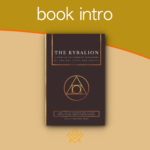 Unravel the secrets of the ancient Egyptian wisdom with our comprehensive guide to the Kybalion, by Three Initiates. Discover its influence on modern thought, the controversies surrounding it, and its seven profound Hermetic principles. Unlock the power of these timeless teachings to transform your understanding of life's mysteries. |
 Book Intro - The Working Tools of an Old York Master by Wilmshurst Unlock the Secrets of Freemasonry! Dive into the profound symbolism of 'The Working Tools of an Old York Master.' Discover the hidden meanings behind the square, compass, plumb line, and more. Embark on a transformative journey of personal growth and spiritual enlightenment. Uncover the ancient wisdom that has shaped generations of Masons. |
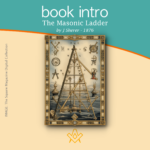 Book Intro - The Masonic Ladder by J Sherer Unlock the mysteries of Freemasonry with "The Masonic Ladder" by J. Sherer - - 1876. This 19th-century guidebook takes readers on a journey through the steps of the Masonic ladder, from the basic principles of the Entered Apprentice to the highest degree of the Sovereign Grand Inspector General. Discover the symbolism, allegory, and values of Freemasonry in this timeless classic. |
 Book Intro - The London mason in the seventeenth century The London Mason in the Seventeenth Century by Douglas Knoop offers a comprehensive examination of the lives and work of masons in the bustling city of London during the seventeenth century. The book delves into the intricacies of their craft, the socioeconomic and political forces that influenced their profession, and the role they played in shaping the architectural landscape of London. |
 Book Intro - History of Freemasonry, Gould, Robert Freke The History of Freemasonry is a comprehensive overview of the origins, development, and evolution of Freemasonry from its ancient roots to the modern era. The book explores the fascinating history of one of the oldest and most mysterious organisations in the world, which has been the subject of much speculation and curiosity over the centuries. - by Robert Freke Gould |
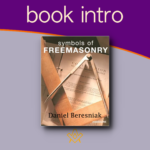 Book Intro - Daniel Beresniak Symbols Of Freemasonry This book is a collection of the symbolic images which Freemasons encounter on their journeys of transformation.' The texts and illustrations form an intimate dialogue whose subject is Freemasonry, and which casts light on the relationship between dreams and reality, reason, intuition and imagination. |
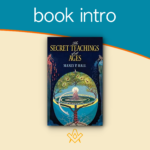 Book Intro - The Secret Teachings of All Ages by Manly P Hall The Secret Teachings of All Ages by Manly P Hall is a comprehensive and in-depth exploration of the various esoteric and occult traditions that have shaped human history. The book covers a wide range of subjects including alchemy, astrology, mysticism, and secret societies, and provides detailed explanations of the underlying principles and concepts. |
 Book Intro - Duncan's Masonic Ritual and Monitor Duncan's Masonic Ritual and Monitor is an impression of the Old York Rite published in New York in 1866. |
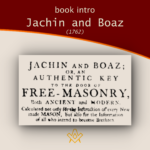 Book Intro - Jachin and Boaz (1762) Thirty two years after Samuel Prichard's Masonry Dissected (1730) a second detailed exposure was published Jachin and Boaz (1762) attributed to the same author, and met with equal distain by Freemasons of the time. However, these exposures offer the masonic historian an invaluable view in to how freemasonry was conducted during its early formation |
 Book Intro - Three Distinct Knocks (c.1760) Giving an exact account of all their proceedings in making a brother, with the three obligations or oaths belonging to the first second, and third degrees of masonry, viz. The entered apprentice, fellow-craft, and master-mason: with the obligating on belonging to the chair, and the grip and word. |
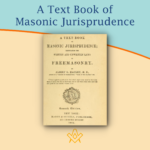 Book Intro - A Text Book of Masonic Jurisprudence An introduction to Albert Mackey's seminal work on Masonic Jurisprudence – the theory or philosophy of Masonic law. The Foundations of Masonic Law are to be found in the Landmarks, or Unwritten Law, and in the Ancient Constitutions, or the Written Law. These constitute the subject matter of the book. |
 Book Intro - The Perfect Ceremonies Of Craft Masonry 1871 A beautiful example of a the rituals, produced in a Medieval illuminated script style. Facsimiles still exist of this illustrated ritual book, of which the most authentically produced version is that available from the Scottish Rite Masonic Book Club. |
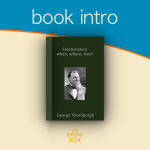 Book Intro – Freemasonry; when, where, how? Introduction to Freemasonry; when, where, how? By George Thornburgh |
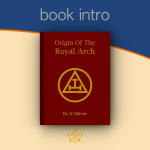 Book Intro - Origin Of The Royal Arch An introduction to the Origin of the Royal Arch, through the eyes of the English nineteenth century masonic author Dr G Oliver (1782–1867) |
 Book Intro – Symbolical Masonry Symbolical Masonry is a treasure-house of Masonic lore, including discussions of key concepts of the first three degrees, along with an extensive study guide. |
 This month we look at – 'A portrait gallery, with biographical sketches of prominent freemasons throughout the United States' |
 Extracted and abridged from The Mystic Tie: Or, Facts and Opinions, Illustrative of the Character and Tendency of Freemasonry By Albert Mackey, |
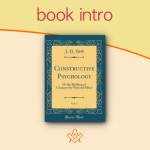 Book intro - Constructive Psychology The introduction to Constructive Psychology or The Building Of Character By Personal Effort by J D Buck a masonic author |
 book intro - Cagliostro: the splendour and misery of a master of magic Preface to the book by William Rutherford Hayes; Cagliostro: the splendour and misery of a master of magic |
 book intro - Origin of the Rosicrucians and the Free-Masons Historico-Critical Inquiry into the Origin of the Rosicrucians and the Free-Masons – Thomas De Quincey |
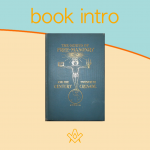 Book Intro - The Genius of Freemasonry The Genius of Freemasonry: “Has any brother anything to offer for the good of Masonry?” The following pages are the author’s answer to that question. |
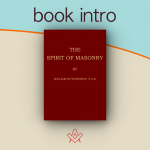 Book Intro - The Spirit of Masonry An essential source for anyone interested in exploring the inner mysteries of the Masonic Fraternity. |
 Book intro - History of Freemasonry Introduction to a classic masonic book by J. G. Findel, History of Freemasonry published 1866 |
 The Book of Constitutions for the Ancient Grand Lodge or Ahiman Rezon |
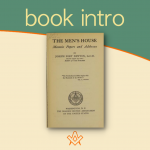 A short introduction to The Men's House, a collection of masonic papers and addresses |
 This is a general survey of Masonic origins, history and philosophy. It was at one time given to every new Mason in Iowa. |
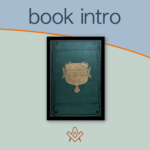 Book Intro - The Discrepancies of Freemasonry Written almost 150 years ago, this book contains wisdom still relevant today. |
 Book Intro - The Principles of Masonic Law "The first great duty, not only of every lodge, but of every Mason, is to see that the landmarks of the Order shall never be impaired". |
 Published in 1911, this fascinating book is equally relevant for the 21st century Mason with an interest in the more mystical side of Freemasonry. |
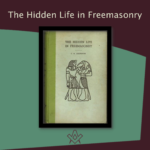 Book Intro - Hidden Life of Freemasonry Introduction to The Hidden Life in Freemasonry (1926) by Charles Webster Leadbeater |
 Book Intro - The Symbolism of Freemasonry Introduction to a classic masonic book; The Symbolism of Freemasonry: Illustrating and Explaining Its Science and Philosophy, its Legends, Myths and Symbols. |
 Book Intro - The Meaning of Masonry This is the Introduction to The Meaning of Masonry, a set of essays which discuss the esoteric side of Masonry |
 Book Intro - Illustrations of Masonry Introduction to Illustrations Of Masonry by William Preston (1742-1818) |
masonic knowledge
to be a better citizen of the world
share the square with two brothers

click image to open email app on mobile device
